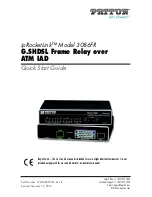
235
Imagine for example, you have two ISDN interfaces, ippp1 and isdn1, which both use
the same MSN. ippp1 accepts calls from any caller as it is used as dial-in interface for
roaming employees. In contrast isdn1 is used to accept incoming calls of a branch office
with a specific caller ID. In this case, calls from the branch office could be accepted by
interface ippp1, which probably won't work.
Accept incoming calls from
With ISDN connections you can use the caller ID for an extended access control. Here
you can determine if this interface will accept calls from any caller or only if a specific
caller ID is sent.
Accept calls from
Enter the list of numbers of acceptable caller IDs for incoming calls on this interface.
Callers that have disabled the transmission of the caller ID will be assigned 0 as caller
ID.
14.1.2.3-D
Idle hangup
Length of a charge unit
To optimise the idle hangup of the ISDN connection, please insert the duration of a
charge unit.
Hangup right before next charge unit if idle for
If no more data is transferred during the time stated here, the line will be automatically
disconnected before the next charge unit is due.
Do not hangup idle incoming calls
Activating this feature is particularly useful for RAS dial-in connections. SX-GATE will
not disconnect the line if no data is being transferred during incoming calls (when the
caller is paying the fees).
14.1.2.3-E
Limits
If SX-GATE is connected to the Internet with a ISDN-PPP dial-up line you can define
upper limits for the online time and the number of connections. These settings apply
to SX-GATE's current default route interface.
















































